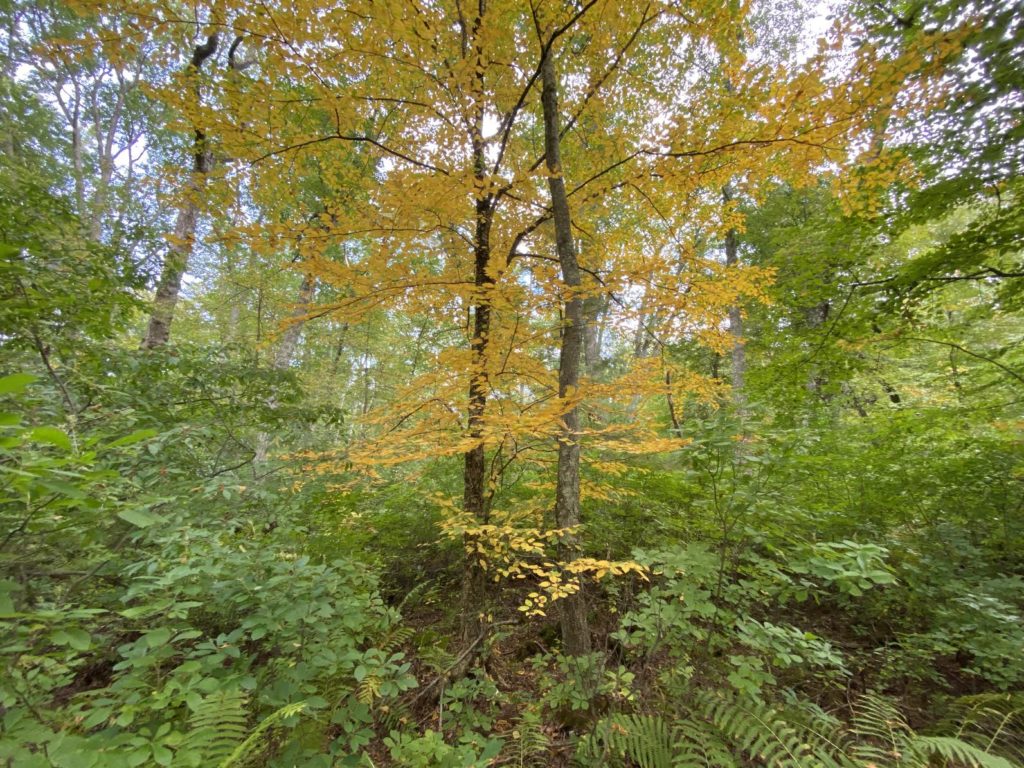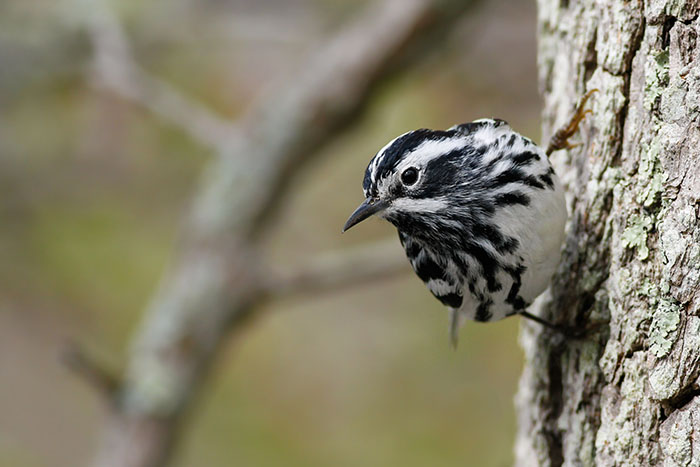Human activity has caused white-tailed deer numbers to swell beyond sustainable levels in the Northeast, which spells trouble for birds that nest in the forest understory. At certain Mass Audubon sanctuaries, staff scientists monitor deer density to keep tabs on their ecosystem impacts.
Deer eat some birds out of house and home
Deer are “ecosystem engineers,” capable of changing the physical characteristics of their habitat by eating plants that grow low to the ground (aka understory). While a few deer per square mile can help plant diversity by creating gaps in the understory, much higher densities—often caused by an absence of natural predators—can spell trouble for plants and wildlife.
It only takes eight deer per square mile begin to reduce the number wildflowers, like trilliums and lady’s slippers. With wildflowers devoured, deer shift their diet to plants with tougher leaves, like birches, blueberry, and greenbrier. As deer thin out the forest understory and eventually remove it entirely, birds that normally rely on this vegetation to cover nests and raise young, like Ovenbirds and Black-and-white Warblers, struggle to persist. Even species that nest in the mid-levels of the forest, like Indigo Buntings and Yellow-billed Cuckoos, are affected when deer reduce the number of tree saplings.
Studies of protected areas show that nearly a third of migratory forest birds are more likely to disappear from forests with overabundant deer populations. It’s not just birds: more than 20 deer per square mile are enough to have severe impacts on bird, amphibian, insect, and mammal species diversity.


Certain kinds of human disturbance help deer
Deer may never have lived as densely in Massachusetts as they do now. Wolves and mountain lions kept deer numbers in balance with their ecosystem until humans exterminated large predators from Massachusetts in the mid-1800s.
In the pre-colonial past, subsistence hunting also helped keep deer numbers in balance with the ecosystem. Sport and commercial hunting had nearly eliminated deer from Massachusetts in the mid-20th century, but their numbers began to bounce back as hunting declined—even though deer’s key predators were never allowed to return to the state.
In the meantime, suburbanization has created a nearly ideal landscape for deer in the Northeast. Suburbs mimic the patchwork of fields and forests that deer love, with open areas for nighttime feeding, sheltered woods for raising young, and landscaped backyards providing a steady supply of ornamental plants that are replaced as deer eat them.
Deer impacts endure
Even if the deer population crashes due to lack of food, disease, or a tough winter, their browsing has long-term impacts. Since deer avoid eating hay-scented fern, a plant that acidifies the soil, the fern can dominate the understory making it inhospitable to other plants. In addition, deer browse gives an advantage aggressive invasive plants with spines or thorns that deter grazing.
In the long term, over-browsed forests go into “regeneration debt,” which is when there are more mature trees than young saplings growing to replace them. Without sapling growth, the forest thins as more mature trees die. And since deer avoid eating some unpalatable saplings, especially pines and conifers, this eventually reduces diversity among mature trees as well.

How densely do deer live on Mass Audubon sanctuaries?
For the past several years, Mass Audubon scientists have employed a variety of methods to estimate deer density. Since 2018, deer monitoring has involved pellet counts and browse surveys at 16 of our sanctuaries.
Pellet counts take place in February and early March, after deer pellets have accumulated through the winter on the forest floor. Pellets decompose slowly because of the cold temperatures, and there isn’t much vegetation that can fall and accumulate on top of it. Browse surveys involve looking for deer impacts on plants, like nibbled-down twigs, to establish if deer are reducing tree regeneration or plant diversity.
Data from the 2020 season (which was interrupted by the pandemic) yielded deer densities ranging from 19 deer/mi2 at Elm Hill in Brookfield, to 31 deer/mi2 at Moose Hill in Sharon, to as many as 66 deer/mi2 at Daniel Webster in Marshfield. Some sanctuaries in Central and Western Mass, like Rutland Brook (Petersham) and Canoe Meadows (Pittsfield) have deer populations closer to the goal of 6-18 deer/mi2 suggested by state biologists.
To ensure that our properties are providing habitat for as many plant and animals as possible, Mass Audubon has implemented controlled, selective hunting programs during hunting season at sites where deer populations are growing unsustainably. After evaluating a variety of options for reducing deer density, we concluded that carefully managed hunting program is the only feasible and effective approach. We will continue to work with conservation partners and the state wildlife agency to maintain deer at appropriate densities so that our forest ecosystems continue to thrive.


justly cemented sort of what I had not put into words- I want all the deer to live healthy lives. but I want more for our birdies to have a balanced habitat mice paper jeff kline Jacksonboro SC
Reply
Interesting article! I live on Cape Cod and we have many deer in our area – we also have a definite increase in the numbers of coyotes. Do they impact the deer population as well? Thank you for any information.
Reply
Hi Susan,
Thanks for the question. Coyotes do prey on young deer and occasionally adult deer, but they don’t have the same effect on the deer population as wolves and mountain lions once did.
Reply